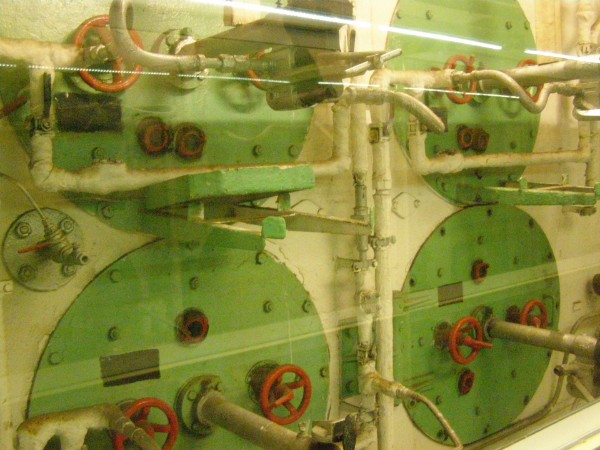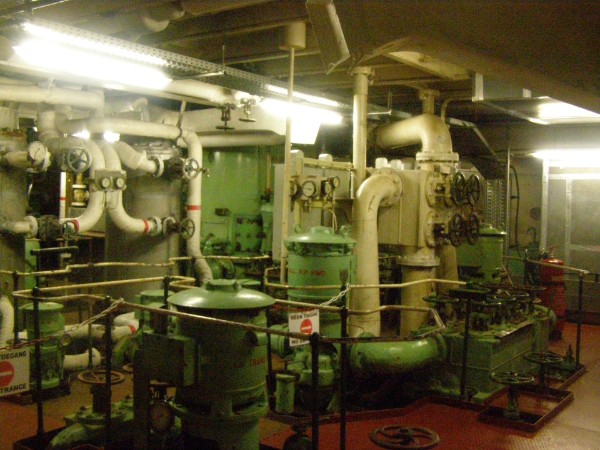I always thought ships had 'an engine room'. Of course I knew some transatlantic liners feautured more of these spaces, but thats all about my knowledge of 'below decks'. So when I wanted to take a tour through the engine room of the 1959-built Rotterdam I didnt know what to expect at all. It did not occur to me that a ship like Rotterdam has a total of nine engine rooms, with an overall lenght of more then 90 meters.
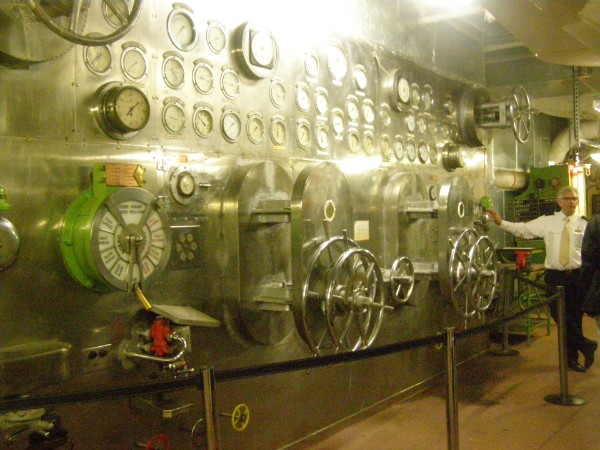
The main swichboard, where the movement of both propellers is controlled. This board functioned through the ships life untill she was decommissioned in the year 2000.
When I first visited the ship, just before she was opened to the public, the engine rooms were not accessible due to the large amount of people that were aboard that day. These spaces are not suitable for large groups of people because of the sharp edges, steep steps and cramped room. So I was glad to see the rooms during a tour in july 2012. A very impressive sight to walk around here and see how it really looks in the deepest parts of the ship, that is normally closed for passengers. At the ships maiden voyage, one special guest was admitted in these rooms, a Secretary named mister Luns. Close to the main board shown above, mister Luns missed a step and bounced the last several steps down on his bottom. According to staff later, they heared the always decent mister Luns say a few words that were normally only heared in port by dockworkers. One of the staff admitted to be gladly surprised that he cursed just as themselves (story from the book 'Rotterdam, the art of travel' by Sandra Van Berkum).
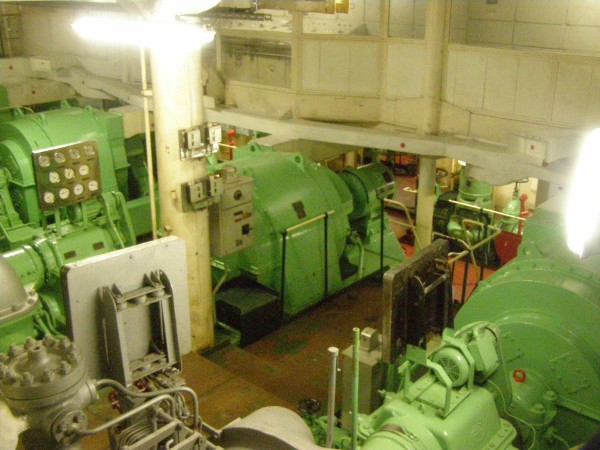
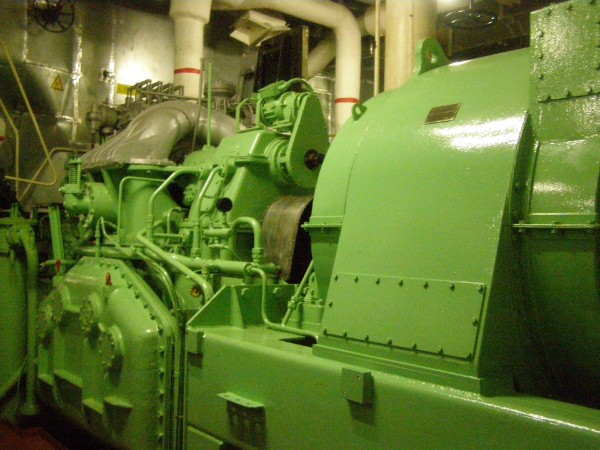
Both pictures above were taken in the generator room, the first room the tour visited. Here, the ships electricity is provided by four enormous generators, from whom one is shown at the second picture, at least part of the genrator.
Below, part of the evaporationroom is shown, a room next to the generatorroom. Here, fresh water is produced from seawater.
Below, part of the airconditioningroom is shown, where as you can guess the airconditioning systems are housed that take care of clean air throughout the ship.

Nowadays, with the ship preserved in Rotterdam, the enginerooms are open for everyone to see. Keep in mind though, that nothing here has been changed since the ship started sailing in 1959. This means that when you have problems walking, standing or climbing stairs, it can be a challenge.
On the day I visited the enginerooms of the Rotterdam, also Grand Princess was in port, just a few kilometers away. The man who gave us the tour, the ship is filled with volunteers who worked with the Holland America Line and who can tell you everything about the ship, told that the stabilizers of Rotterdam extend three meters out of the hull, just like on a much larger ship as Grand Princess. This is for both, although the big changes in design, enough to keep stability. Below, one of the stabilizers at Rotterdam is shown.
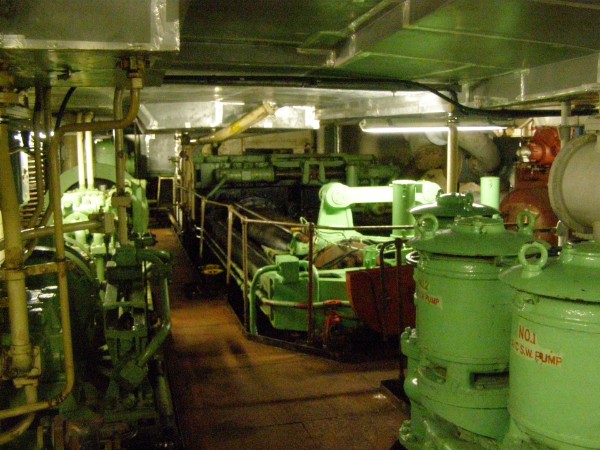
Very important for the ship also of course, is also the turbineroom, where the two massive steam turbines are housed. These turbines are high also, the room is two decks high. Of course, they drive the propellers of the ship. The next two pictures give an idea of the turbines, which cannot be shown in total due to their size.
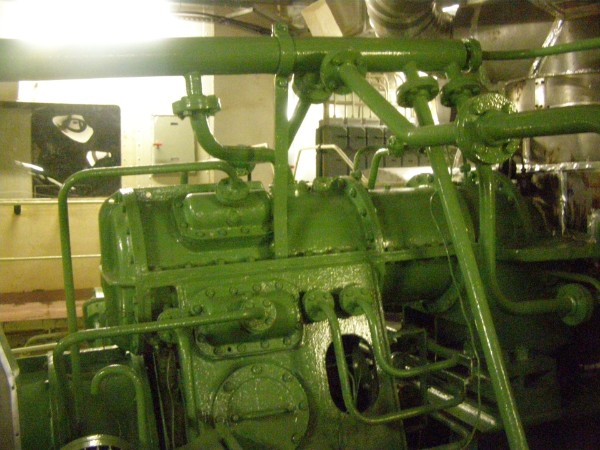
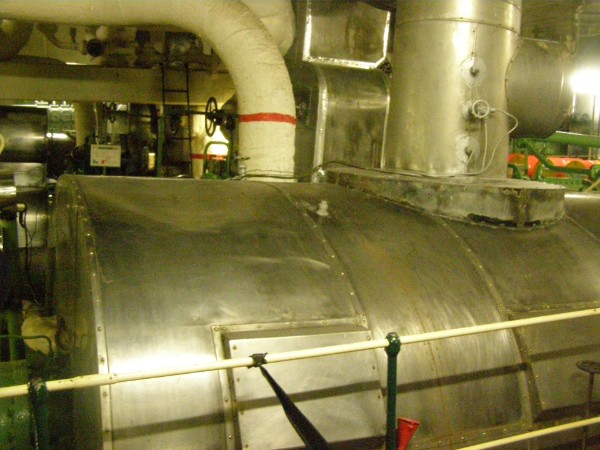
Below, part of the propellershaft is shown, just to the most aft-end of the ship where the shafts leave the ship. The original propellers have been removed nowadays, one of them on display at the quayside.
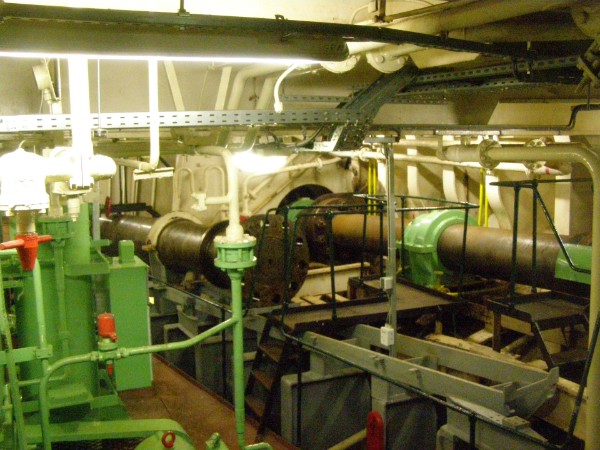
Below, some details from the main engine room are shown. Unfortunately, there is still one space within the enginerooms complex that is not accessible for tours, the main steering room. This is the most forward part of the enginerooms, where the connections between the bridge and the enginerooms are situated. But it is a very unique experience to be able to take a look in the enginerooms of a former transatlantic liner. As a Dutchman, I am very proud that it can be done aboard a great Dutch ship.
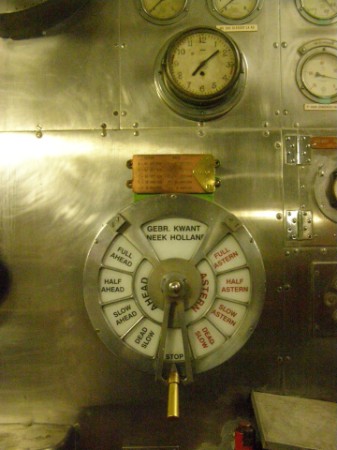 | | 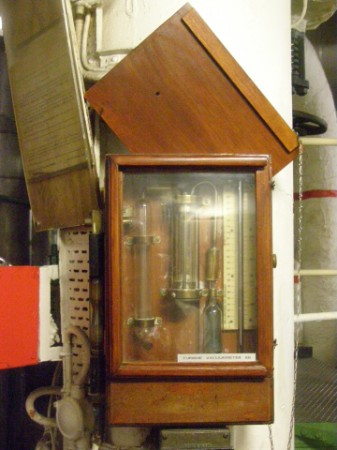 |
The telegraph from the main swichboard | | Detail from the main engine room |
The picture below was taken in the boilerroom, the one room that, because of all pipes, swiches and edges, is shown through plexiglass. This is done purely for safety, but you can still see everything in this space.
